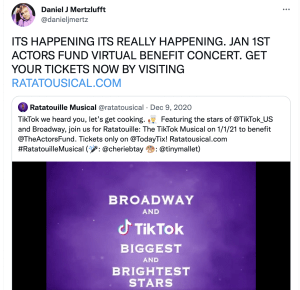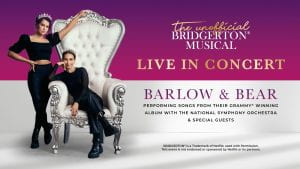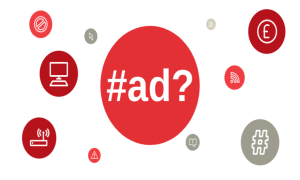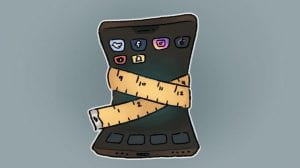After a long day at work, most people now sit down for a nice relaxing…scroll. That’s right, most people have social media and enjoy going through the latest posts to wind down or pass the time. Whether it’s on Instagram, Facebook, or TikTok someone is looking at a post made by a parent displaying their child doing something adorable, funny, documenting a family trip or marking a milestone like the first day of school. What seems like an innocent post, can be something much darker.

What is Sharenting
As social media gained traction in recent years, so did sharenting. Sharenting is when
a parent overshares or excessively posts information, pictures stories or updates about their child’s life.
A proud parent could post the smiling face of their child at a sporting event on their private account thinking only family and friends will see it. Some parents even post daily vlogs involving their children making money on filming their day to day with strangers. Most parents engage in sharenting to share details of their child because they are proud of them. Some want to build a digital archive, or want to connect with loved ones. Others are even trying to build camaraderie with other parents, and they could even be trying to help others. Most parents do this with the purest motives in mind; however, their content is not always received as it is intended.
The Risks of Sharenting
Legal Risks
As established in Troxel v. Grainville, parents have a fundamental right to raise their children as they see fit. This includes education, religion, and even social media. Parents have a First Amendment right to speech just as much as a child does when it comes to posting online. Parents are protected in their posting videos and pictures of their children under the First Amendment; however, this right is not unlimited. These restrictions apply in certain circumstances such as child explosion laws, or other compelling state interests.
Children also have a right to privacy that conflicts with their parents First Amendment right of speech and expression in the context of posting them online. Under the Children’s Online Privacy Protection Act (COPPA), significant protections for children’s online privacy were established. COPPA imposes certain requirements on operators of websites or online services directed
to children under 13 years of age, and on operators of other websites or online services that have actual knowledge that they are collecting personal information online from a child under 13 years of age.
COPPA, however, only targets protecting children’s data not the actual child from the risks of being online.
Psychological Risks

In addition to the legal risks of sharenting, there are also many psychological risks. What happens when a parent posts that one picture that comes back to haunt their child later on. These videos and images can be used by other students to bully the child down the road. Children can have a harder time developing their own image and identity when they are prescribed an online persona by their parents through their posts.
Even with pure motives, a survey of parents discussed by Dr. Albers of the Cleveland Health Clinic found that:
74% of parents using social media knew another parent engaging in sharenting behavior.
56% said the parents shared embarrassing information about their kid.
51% said the parent provided details that revealed their child’s location.
27% said the parent circulated inappropriate phots.
The impact that these posts that, once are made are always out there, can be detrimental to a child’s mental health. Social media, according to the Mayo Clinic, already amplifies adolescents’ anxiety and depression. Parents can add to this by sharenting.
Other Risks
These seemingly innocent posts can often lead to greater risks, for their children than most parents realize. In addition to negative psychological impacts, sharenting can endanger the child’s mental health as well as their physical health. Sharenting is a window directly into a child’s life, one which a predator can abuse. Images can be taken from their parents accounts and shared to sites for pedophiles.
The taking of these images can also enable identity theft, harassment, bullying, exploitation and even violence.
Parents who have gotten famous from posting their kids like the Labrant Family and The Fisher’s have increased their kids risk of being subject to one of these crimes by constantly posting them online.
Sharenting can blur the line between a fun posts and advertising your child to strangers. In extreme situations creating dangerous environments for internet famous children.
Parents are also contributing to their child’s digital identity which could impact their future educational and employment prospects. It could also lead to embarrassment that the content was shared, and they cannot get rid of it.
How Can Parents Protect their Kids
As social media continues to grow and be a part of our daily lives, parents can take action to protect their children going forward. One way parents can do this is by blurring or covering their child’s face with an emoji. Parents can still have the excitement of posting their child’s achievements or milestones without exposing their identity to the internet.
Parents can think before they post.
If you’re trying to decide whether a post counts as sharenting, ask yourself these questions:
What’s the content?
Why am I posting it?
Who’s my intended audience? Have I set my permissions accordingly?
Is my child old enough to understand the concept of a digital footprint? If they are, did I ask their consent? If not, do I think they’d be happy to see this online when they’re older?
Sharenting is not going to stop, but it can evolve to be done in a way that protects a parent’s right to post and their child’s safety.





 Premiered as a one-night livestream event in January 1 2021, all profits generated from the event were donated to the
Premiered as a one-night livestream event in January 1 2021, all profits generated from the event were donated to the 



